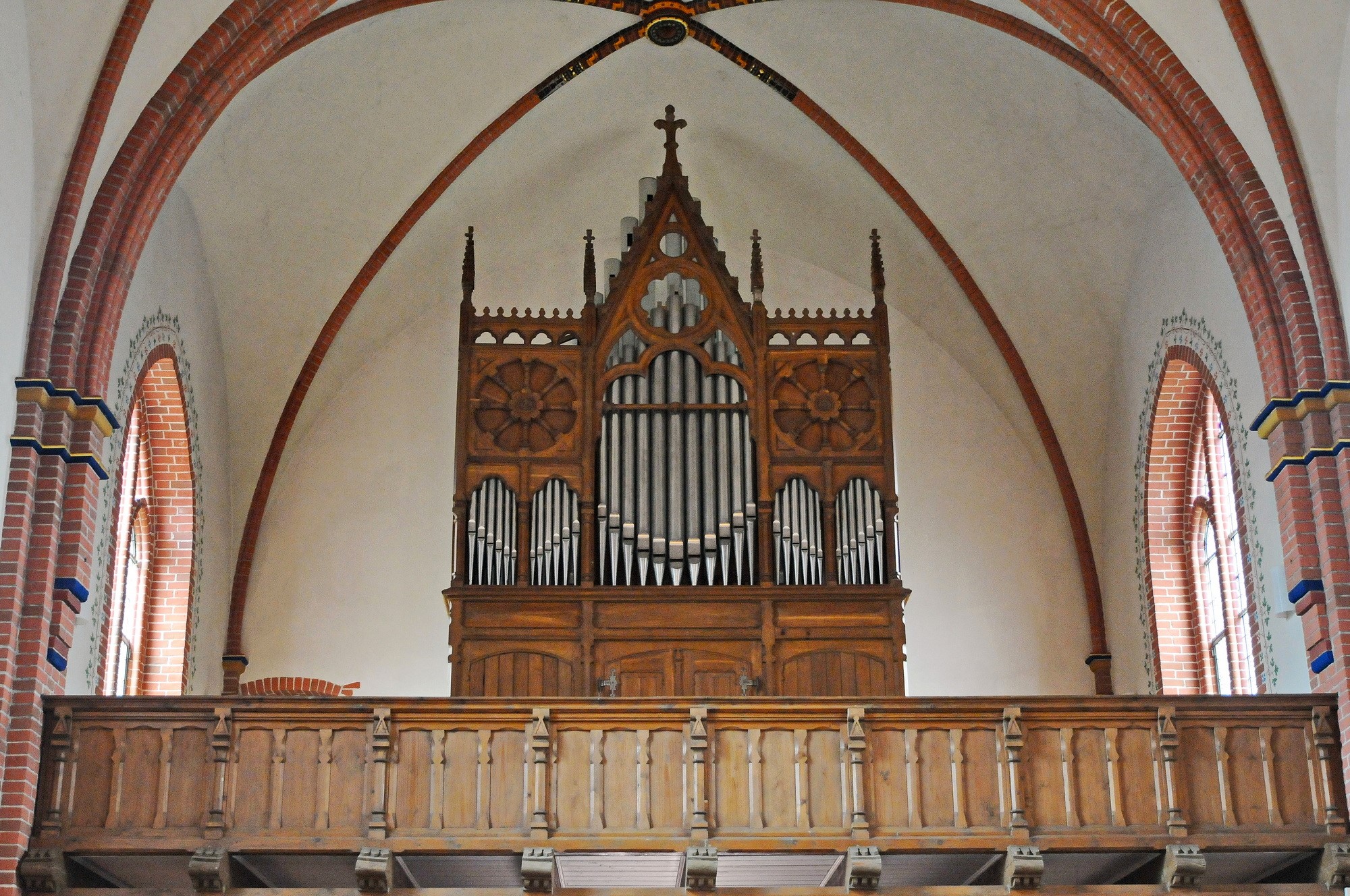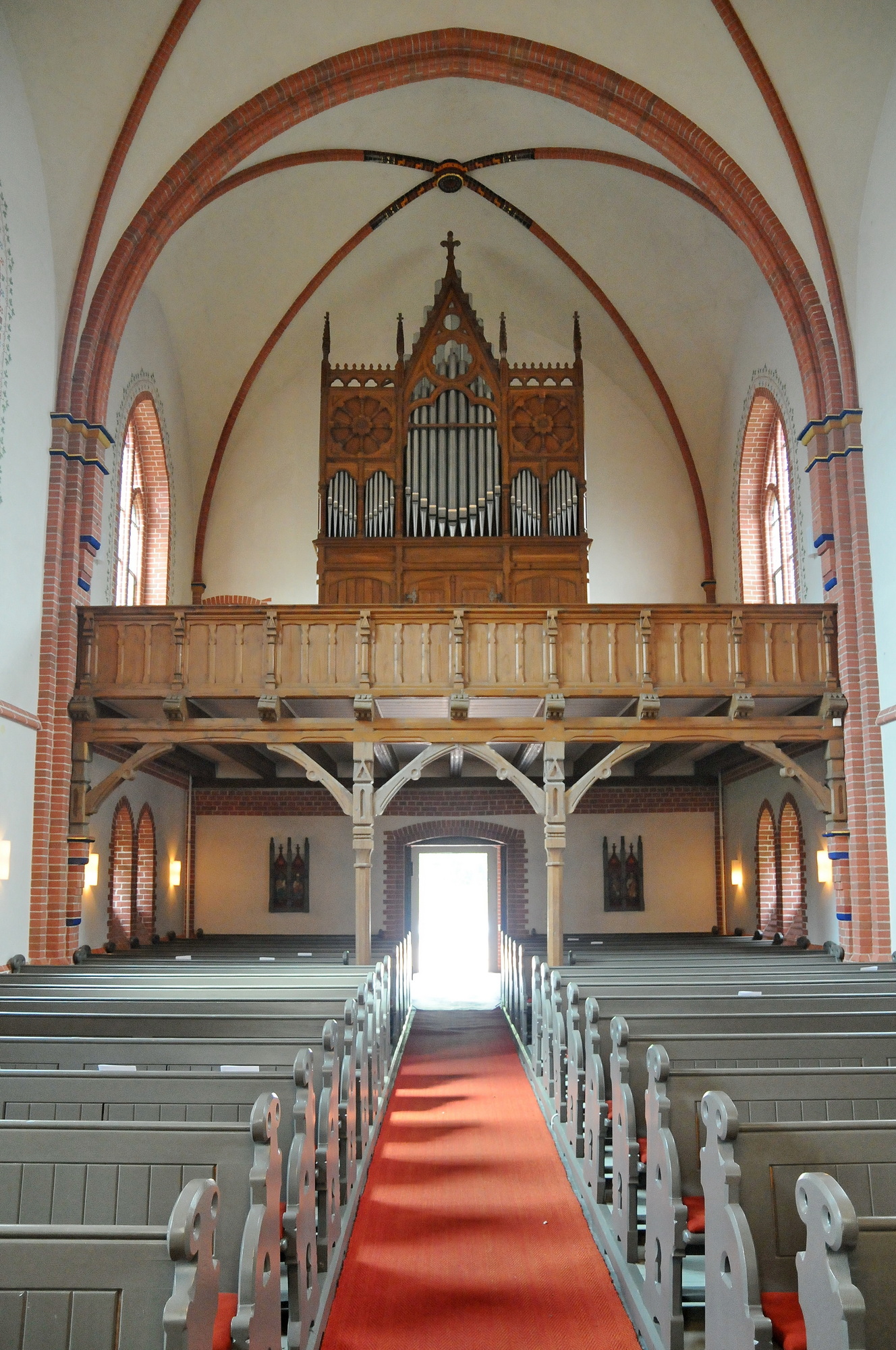Kuhstedt, Erlöserkirche
| Builder | Furtwängler & Hammer |
|---|---|
| Year | 1893 |
| Period/Style | Romantic |
| Stops | 16 |
| Keyboards | 2+P |
| Keyaction | tracker/mechanical |
| Tuning | Equal at 440 Hz |
The organ in the Erlöserkirche in Kuhstedt was built in 1893 by the organ-building firm Furtwängler & Hammer, labeled as No. 294. This instrument, featuring twelve registers on the manuals and four on the pedal, was constructed with a mechanical cone chest and pneumatic register controls, reflecting the typical sound of late 19th-century organs. During World War I, the original tin prospect pipes were removed and replaced with zinc pipes due to metal shortages.
In 1978-1979, the organ underwent restoration by the firm Alfred Führer, which included reconstructing the prospect pipes in tin. Later, in 2008, the organ was thoroughly overhauled both technically and tonally by the organ builder Harm Dieder Kirschner, ensuring its preservation and enhancing its sound quality.
In 1978-1979, the organ underwent restoration by the firm Alfred Führer, which included reconstructing the prospect pipes in tin. Later, in 2008, the organ was thoroughly overhauled both technically and tonally by the organ builder Harm Dieder Kirschner, ensuring its preservation and enhancing its sound quality.
| Manual I | Manual II | Pedal |
|---|---|---|
| Bordun 16' | Geigen Principal 8' | Subbaß 16' |
| Principal 8' | Liebl. Gedackt 8' | Violon 16' |
| Gamba 8' | Salicional 8' | Principalbass 8' |
| Octave 4' | Harmonieflöte 8' | Posaune 16' |
| Rohrflöte 4' | Viola 4' | |
| Octave 2' | ||
| Mixtur 2, 3, 4f |
No Video/Audio samples available.
https://nomine.net/orgel/kuhstedt-erloeserkirche/
 Pipe Organ Map
Pipe Organ Map
